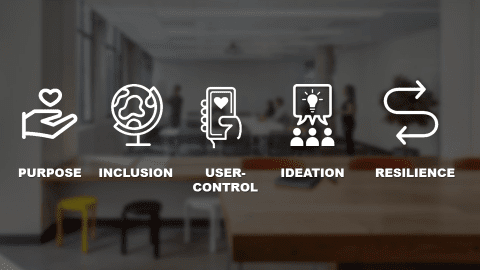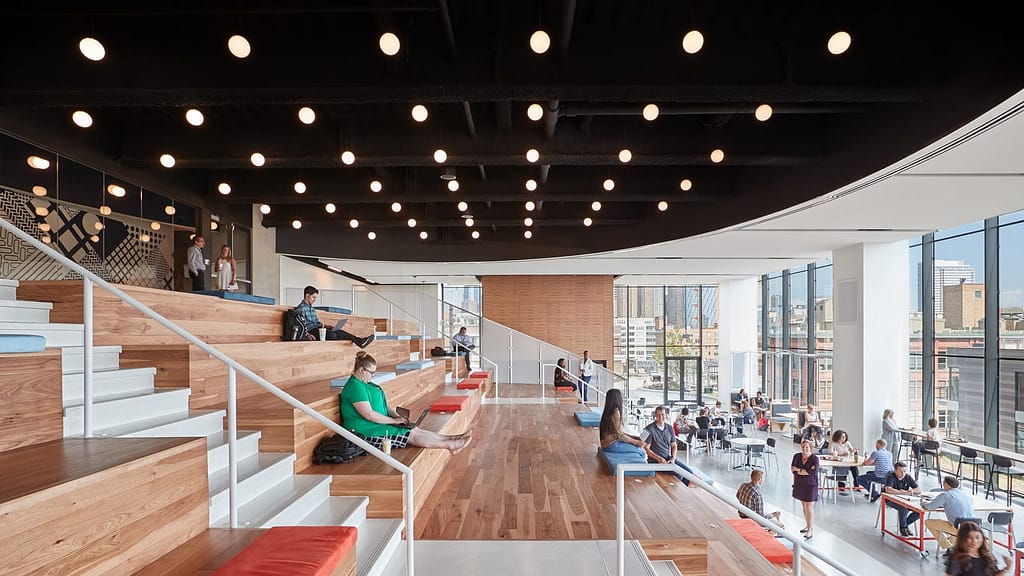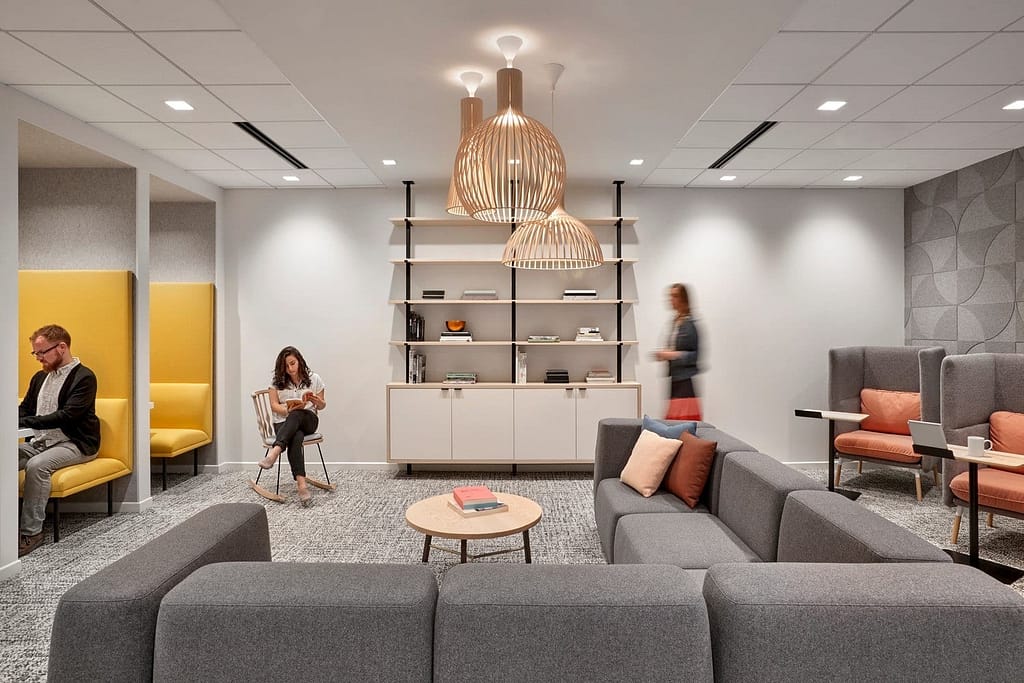
A workplace that provides for mental and physical wellbeing as well as comradery and professional opportunity is enticing and good business. rEvolution, Chicago. Photography © Tom Harris.
With NeoCon 2019 now in the books, we asked IA Design Director and Principal Neil Schneider about his participation there as one of two presenters on IIDA’s panel, What Clients Want, moderated by Cheryl Durst, IIDA Executive Vice President, and CEO. Schneider was asked to prepare in advance and speak to questions broadly summarized here: How have social change, demographic shifts, and technology affected clients and your work over the last 5 years? What contributes to worker wellbeing and productivity? What predictions can be made about what’s next? We asked Neil to share in essence the substance of his answers and their implications.
The Workplace Today

Schneider sees today’s work environment as an ecosystem focused on purpose, inclusion, user-control, ideation, and resilience. To remain relevant and thriving companies must be agile and innovative. Statistics prove the point. Five years ago, 80 percent of the current jobs supported by one IA client did not exist, and this is not an isolated incident. Training and development have to be key issues for employers, which makes the workplace by default, as well as intent, a strategic learning environment. Dexterity, invention, the rapid adoption of new technologies, and creative change are client goals that shape the workplace. And despite the success of telecommuting, several companies want the workforce on site and aim to bring remote workers back. Research shows that working face to face drives greater creativity, productivity, and solves more problems than virtual teaming, although there is still a place for mobile work and networked teams across national and global locations.
Gen Z
Fortuitously, Gen Z, which is just coming into the workforce, seems an ideal fit for the current workplace. With an eye to the big picture, they look at an organization’s purpose and want to make a difference. Though competitive and eager to show what they can do, they want to learn and expect to be coached and mentored. As true digital natives, their capacity for multitasking and intuition for new software, honed by unremitting attention to multiple apps and social media, outperforms previous generations. They are primed to quickly embrace new technologies.

Training and development are key issues. The workplace has become a strategic learning environment. Confidential Client, Chicago. Photo © Garrett Rowland
Furthermore, they come to an organization and tell it what they want and anticipate. They set parameters and know what they can do. They can’t do everything but expect a work-life balance, wellbeing, and good compensation. Pragmatic, fiscally responsible, and concerned with their financial future, they’ve seen their parents take significant hits during the last great recession and understand the dilemma of huge tuition costs that are not followed by lucrative jobs to provide for debt and a positive standard of living.
Gen Z, as a demographic, is affecting the current workplace scenario, with physical and mental wellbeing high on their list of workplace requirements. But they are not alone; all workers want a better self capable of dealing with today’s tremendous pressures. Keeping up with the pace of living and professional commitment is exhausting. With so many factors vying for our attention on every level the anxiety and fear of losing out is palatable; we are asked and want to be part of everything with burnout a real threat. The idea of simplification, focus, and needs met in one location—a workplace that provides for mental and physical wellbeing as well as comradery, professional opportunity, and financial gain—is enticing and good business.
What Clients Want

Quiet rooms allow for decompression during an intense workday. Confidential Client, Chicago. Photography © Garrett Rowland.
Predictions
As for predictions, through integrated systems buildings will give both employers and employees more. In the future, designers will work with clients in new ways now barely conceived, but coming rapidly. As amenities similar to those available in our home—the control of lighting, temperature, music, security, etc.—and other conveniences specific to the workplace become available, we will learn from their use and algorithms how buildings can better complement the workforce and operate more effectively. The culling of data will determine new possibilities that we haven’t yet envisioned. Our use of the workplace monitored in this way will shape our reality and the work environment.
IA is a global firm of architects, designers, strategists, and specialists. We focus exclusively on environments through the lens of interior architecture—a radical idea in 1984, when IA was founded. We are highly connected agents of change, committed to creativity, innovation, growth, and community.
IA is a global firm of architects, designers, strategists, and specialists. We focus exclusively on environments through the lens of interior architecture—a radical idea in 1984, when IA was founded. We are highly connected agents of change, committed to creativity, innovation, growth, and community.
Catching Up With Neil Schneider via @IAarchitects
